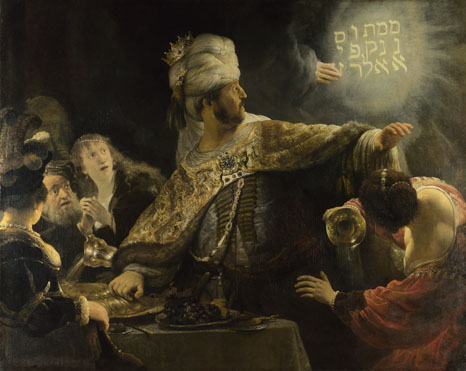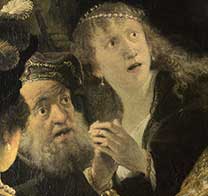Dramatic scenes
Rembrandt's ambition was to make history paintings - depictions of narratives from the Bible or ancient history. Such works had a high status as they were considered to be the most difficult kind of painting to do: the artist had to tell a story, and often deliver a moral message, all in one 'frozen moment'.

This dramatic scene is one of Rembrandt's early moves to establish himself as a history painter. What seems to be going on, and how is it communicated to the viewer? Think about which parts of the painting attract your eye first, and why you're drawn to them.
Light picks out expressive faces, hands, and some mysterious luminous writing. The diagonal sweep of King Belshazzar's outstretched arms forms the dynamic centre of this composition.

Those nearest to him react to his evident terror. He has realised that 'the writing is on the wall': an encoded form of Hebrew spells out his doom, punishment for using looted sacred vessels from the Temple in Jerusalem at one of his feasts.
Rembrandt has also included an enigmatic young musician emerging from the gloom at the left hand side, playing a pipe and looking directly at us. What effect do you think this figure has on the scene?
Occasionally the drama in Rembrandt's life didn't stay on canvas.

